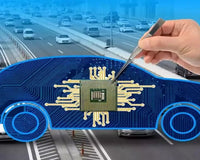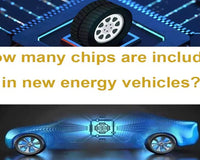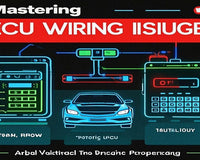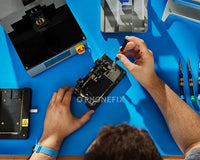
The ECU and the Rise of Digital Diagnosis
The ECU is the central nervous system of modern automobiles, responsible for governing a myriad of vital functions, from engine performance to safety features. It's an intricate web of silicon, software, and sensors that, like any technology, is susceptible to malfunctions.
Traditionally, diagnosing car issues required a blend of intuition, experience, and mechanical know-how. The advent of digital diagnostic tools marked a paradigm shift. These sophisticated instruments are designed to interface with a car’s ECU, providing detailed insights into its condition. Today, understanding these tools is as important as knowing your way around an engine block.

The Core ECU Diagnostic Tools
1. OBD-II Scanners
OBD-II scanners are the starting point for most ECU diagnostic activities. They read the Diagnostic Trouble Codes (DTCs) stored in the computer's memory to indicate the source of a problem.
2. ECU Programmers

More comprehensive than code readers, ECU programmers typically allow you to read and clear codes, but their main function is to reprogram or "flash" the ECU with updated software or customized settings.
3. Digital Multimeters (DMMs)

DMMs are essential for electrical diagnostics. They measure voltage, current, and resistance, offering insight into the performance of various components like sensors and actuators.
4. Oscilloscopes

Oscilloscopes visualize the behavior of electrical signals over time and are incredibly powerful in diagnosing complex issues, such as intermittent electrical faults.
For automotive diagnostics, you'll primarily use the oscilloscope to analyze sensor and actuator signals. Knowledge of waveforms is key to understanding performance.
5. Sensor Simulators
These devices replicate the signals that different sensors would generate under various conditions. This can help you verify the ECU's response without needing to create the actual conditions.
Simulators exist for sensors like the oxygen sensor, throttle position sensor, and more. They often come with switch and control functions for simulating a complete sensor environment.
Using ECU Diagnostic Tools in Practice
Understanding the tools is the first step; applying them effectively is where mastery begins.
Data Logging and Analysis

Some advanced scanners and programmers offer data logging capabilities. Use this to capture a broad set of data and analyze it for trends and anomalies, which can paint a fuller picture of the problem.
ECU Programming Best Practices
Be sure to follow the manufacturer's instructions when reprogramming an ECU. Knowledge of the exact make, model, and year of your vehicle is critical to avoid potential complications.
Sensor and Actuator Testing
Use the correct diagnostic procedures to test sensors and actuators. This often involves comparing readings on a multimeter or oscilloscope against manufacturer specifications.
Simulators in Action
Simulators can save you time and effort in testing, but they are not a silver bullet. Ensure the ECU's inputs and outputs are all functioning correctly before assuming a problem lies with the ECU itself.
Becoming proficient in ECU diagnostics is a multi-faceted endeavor, requiring technical knowledge, the right tools, and hands-on experience. It's a worthwhile investment, enabling you to not only fix problems but also push the boundaries of what your vehicle can achieve. With vigilance in keeping up with the latest in automotive technology, the road ahead is full of potential for those brave enough to venture into the heart of their car's digital domain.










